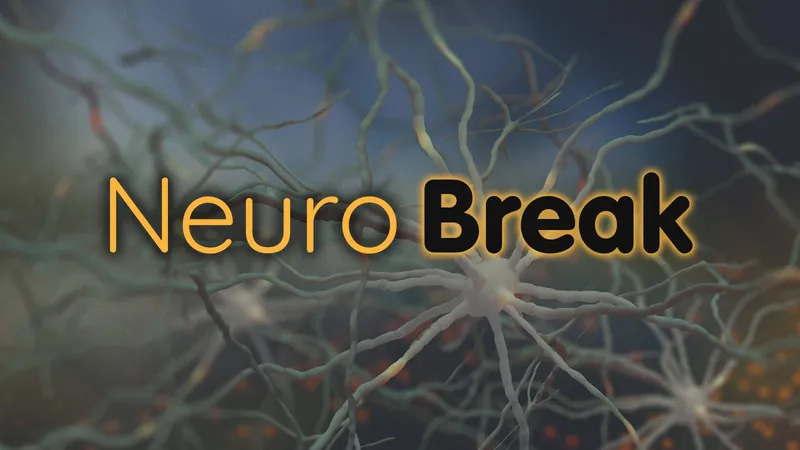
Breakthroughs in Neuroscience: Cleansing the Brain, Overcoming Benzodiazepine Dependency, and New Treatments for PML
2024-10-08
Author: Mei
Cleansing the Brain: The Glymphatic System
Recent advancements in neuroscience have shed light on how the brain eliminates waste, revealing the fascinating workings of the glymphatic system. A study featured in the Proceedings of the National Academy of Sciences (PNAS) explored imaging techniques in neurosurgery patients, highlighting the brain's remarkable capacity to clear metabolic waste and toxins—an essential function for maintaining neurological health.
Overcoming Benzodiazepine Dependency
Moreover, a randomized trial published in JAMA Internal Medicine showcased how a masked tapering protocol involving targeted behavioral interventions has successfully assisted older adults in discontinuing benzodiazepine receptor agonists. This method not only addresses insomnia in aging populations but also minimizes the dependency risks associated with these medications— a critical feat, considering the growing concerns over benzodiazepine misuse.
New Treatments for Progressive Multifocal Leukoencephalopathy (PML)
Parallel research focused on progressive multifocal leukoencephalopathy (PML), a serious brain infection often linked to immunosuppression. A recent case series indicated that utilizing directly isolated allogeneic virus-specific T cells might significantly reduce mortality rates and enhance functional outcomes for PML patients, according to findings in JAMA Neurology.
Investigating Long-Term Effects of COVID-19 on the Brain
Additionally, advanced imaging studies, specifically 7T MRI scans, have revealed long-term changes in the brainstem of individuals who experienced severe COVID-19 early in the pandemic, published in Brain. These findings point to the possible lasting effects of the virus on the neurological health of survivors.
Challenges in ALS Treatment with Tofersen (Qalsody)
Research obstacles remain, particularly regarding the treatment of amyotrophic lateral sclerosis (ALS) with tofersen (Qalsody). Experts have identified the need for better identification methods of SOD1 gene variants in patients to ensure targeted and effective treatment, further discussed in JAMA Neurology.
Future Directions in Parkinson's Disease Research
Finally, experts are looking toward the future of Parkinson's disease therapies by drawing upon the lessons learned from multiple sclerosis research, as reviewed in Nature Reviews Neurology.
With these developments unfolding, the field of neuroscience continues to offer hope and innovation, paving the way for improved patient outcomes and a deeper understanding of brain function.




 Brasil (PT)
Brasil (PT)
 Canada (EN)
Canada (EN)
 Chile (ES)
Chile (ES)
 España (ES)
España (ES)
 France (FR)
France (FR)
 Hong Kong (EN)
Hong Kong (EN)
 Italia (IT)
Italia (IT)
 日本 (JA)
日本 (JA)
 Magyarország (HU)
Magyarország (HU)
 Norge (NO)
Norge (NO)
 Polska (PL)
Polska (PL)
 Schweiz (DE)
Schweiz (DE)
 Singapore (EN)
Singapore (EN)
 Sverige (SV)
Sverige (SV)
 Suomi (FI)
Suomi (FI)
 Türkiye (TR)
Türkiye (TR)